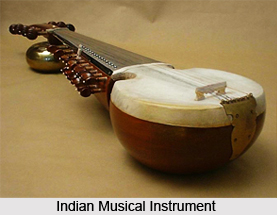 Indian Music in Ancient Age demarcates the fine line that finally flayed the base upon which the palace of musical abode was built and furnished for ages to come. The serenity of music is indeed a sojourn to the world of spirituality from the plebeian world of infra-realism. The ancient era has been a key genre to the permanence of music; music being one of the revenue of in the hunt for temporal refuge from the world of mundane conduct and dogmatic reality and music being an ointment, a balm to unwind the mind with the notes of music.
Indian Music in Ancient Age demarcates the fine line that finally flayed the base upon which the palace of musical abode was built and furnished for ages to come. The serenity of music is indeed a sojourn to the world of spirituality from the plebeian world of infra-realism. The ancient era has been a key genre to the permanence of music; music being one of the revenue of in the hunt for temporal refuge from the world of mundane conduct and dogmatic reality and music being an ointment, a balm to unwind the mind with the notes of music.
Ancient music in India dates back to the Vedic ages, over two thousand years back with the concept of Naadbrahma being manifested in the Vedic ages. The prehistoric music was substituted by Ancient Music. Across all the civilization this characteristic feature had been noticed and India was hardly an exception. All organised music traces its origins back to the Sama veda which contains the earliest known form of organised music. The earliest known raga owes its gratitude for its origin to Sama veda and its first reference was made by Panini in 500 BC and the first reference to musical theory was found in `Rikpratisakhya` in 400 BC. Bharata Natyashastra, etched on 4th century AD, contains a number of chapters on music, which was probably the first clear written work on music that has separated music into octaves and twenty-two keys. The next important work on music was `Dathilan` that also mentions the existence of twenty-two srutis per octave. According to ancient notion, these twenty-two srutis are the only keys that can be made by the human being. Other works written during this period include `Brihaddesi` written by Matanga on 9th AD, which attempts to define Raga; `Sangeeta Makaranda; written by Narada on eleventh century AD, which enumerates ninety-three Raagas and classifies them into masculine and feminine species; `Swaramela Kalanidhi` written by Ramamatya in the sixteenth century AD and `Chaturdandi Prakssika` written by Venkata Makhhi in the seventeenth century AD.
 During the late Vedic Period i.e. from three thousand to twelve hundred B.C., music prevailed in the form called Samgana, which was purely a chanting of the verses in musical patterns. After that music changed its course a little bit. The epics were narrated in musical tones called `Jatigan.` Between the second to the seventh century AD, a form of music called `Prabandh Sangeet`, written in Sanskrit language became very popular. This form gave rise to a simpler form called Dhruvapad, which used Hindi language as the medium. The Gupta period is considered as the golden era in the development of Indian Music. Musical instruments like the sarod, sarangi, tabla and sitar which are very popular in the world of music today had also been a part of the ancient Indian music. Ghazals, khayal, tala, gharana and raga are the musical genres of the Indian classical music. In ancient India, music used to be a part of the famous Sanskrit dramas like Mirchakatika and Abhijnanasakuntalam. The origin of the ancient Indian music began in the age of the Aryans, with the chanting of the Vedas. Music has remained an integral part of the Indian culture since antiquity.
Ludwig van Beethoven had observed "Music is the mediator between the spiritual and the sensual life"- and Ancient music in India confirms such.
During the late Vedic Period i.e. from three thousand to twelve hundred B.C., music prevailed in the form called Samgana, which was purely a chanting of the verses in musical patterns. After that music changed its course a little bit. The epics were narrated in musical tones called `Jatigan.` Between the second to the seventh century AD, a form of music called `Prabandh Sangeet`, written in Sanskrit language became very popular. This form gave rise to a simpler form called Dhruvapad, which used Hindi language as the medium. The Gupta period is considered as the golden era in the development of Indian Music. Musical instruments like the sarod, sarangi, tabla and sitar which are very popular in the world of music today had also been a part of the ancient Indian music. Ghazals, khayal, tala, gharana and raga are the musical genres of the Indian classical music. In ancient India, music used to be a part of the famous Sanskrit dramas like Mirchakatika and Abhijnanasakuntalam. The origin of the ancient Indian music began in the age of the Aryans, with the chanting of the Vedas. Music has remained an integral part of the Indian culture since antiquity.
Ludwig van Beethoven had observed "Music is the mediator between the spiritual and the sensual life"- and Ancient music in India confirms such.




















